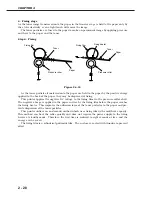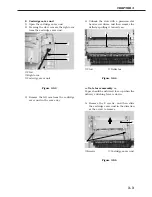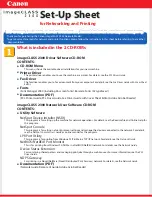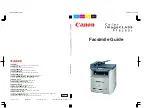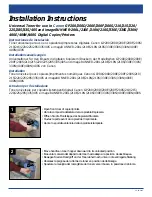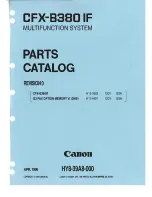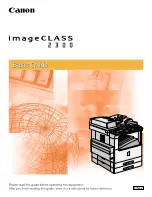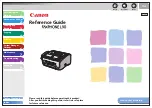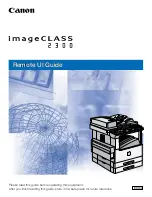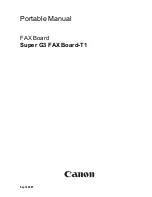
2. Developing stage
The toner is applied to the electrostatic latent image on the surface of the photosensitive drum
to form a visible image. This printer performs the toner projection development with a single-
component toner.
Step 3: Development
Figure 2-4-8
Note:
Charges in the exposed areas of the photosensitive drum are shown as positive in this
figure, even though they are actually negative. It means that the photosensitive drum
potential is higher as compared with that of cylinder.
As shown in Figure 2-4-8, the developing unit consists of a developing cylinder and rubber
blade. The developing cylinder consists of a fixed magnet and a cylinder which rotates around
the magnet.
The single-component toner mainly consists of magnetite and resin binder and is held to the
cylinder by magnetic attraction. The toner functions as an insulator, and acquires a negative
charge by friction due to the rotating cylinder.
The areas on the drum that were exposed to the laser beam have a higher potential (are less
negative) than the negatively charged toner particles on the developing cylinder. When these
areas approach the toner layer of the cylinder (with negative charges), the potential difference
(higher on the drum) projects the toner particles to them.
This is called toner projection development, which makes the latent image on the drum visi-
ble.
Figure 2-4-9
CHAPTER 2
2 - 26
Stirrer
Blade
Developing cylinder
Photosensitive
drum
AC bias
DC bias
V
oltage
(V)
Developing cylinder
surface potential
Drum surface
potential
(Light area)
+V
-V
0
Time (t)
DC bias
Drum surface
potential
(Dark area)

















